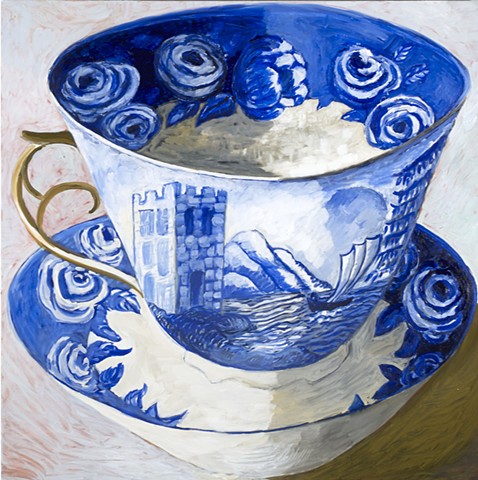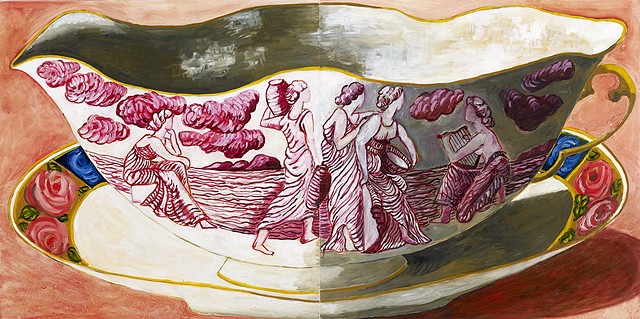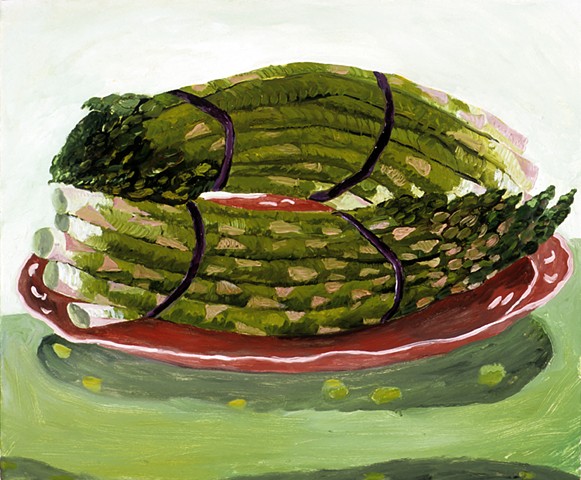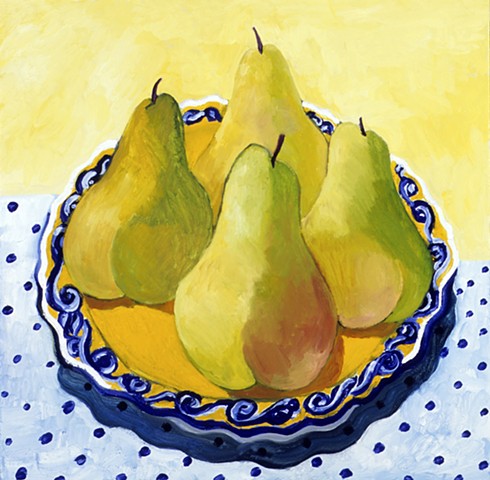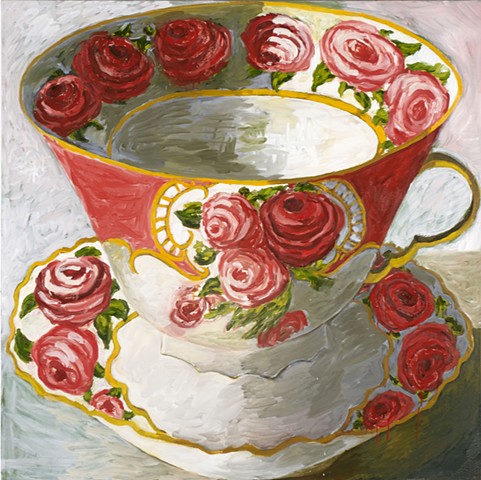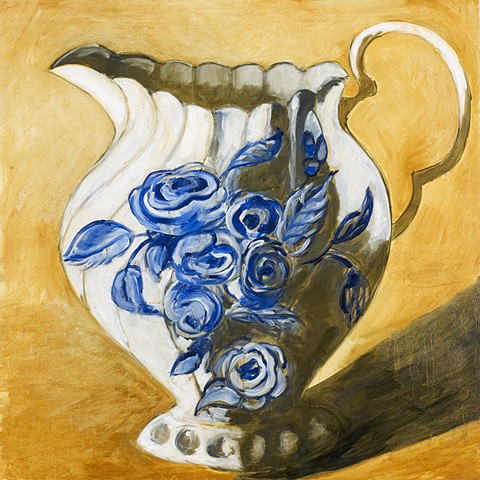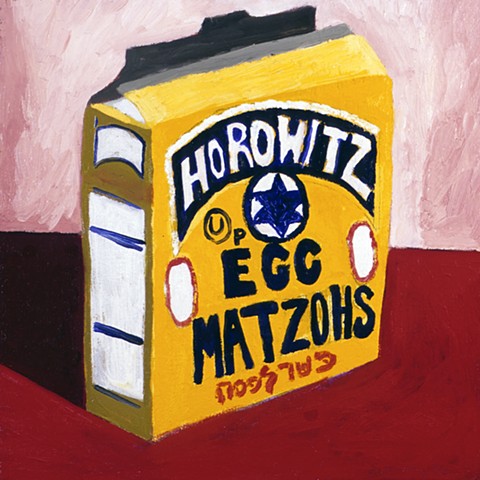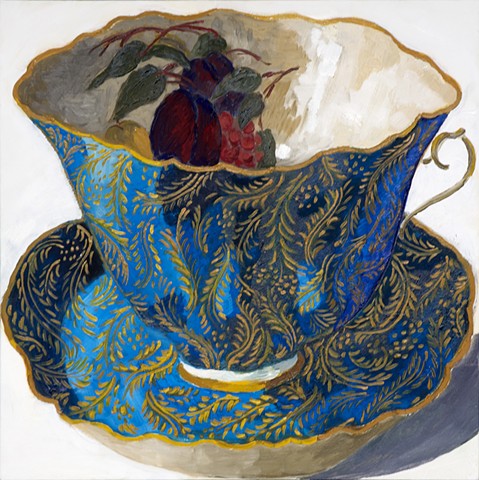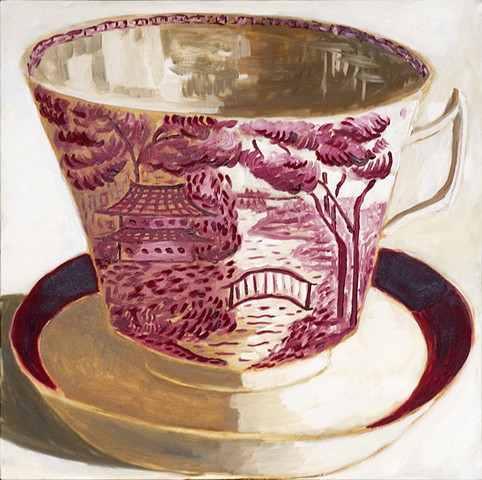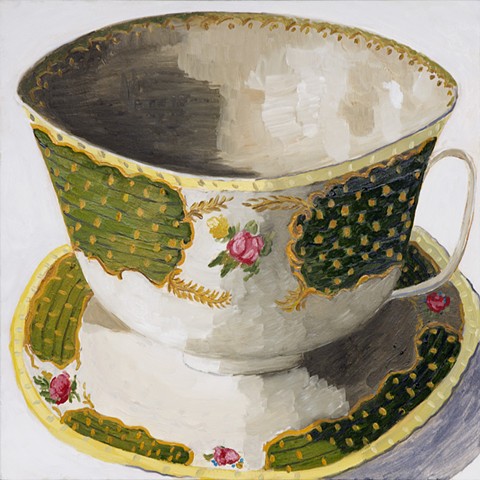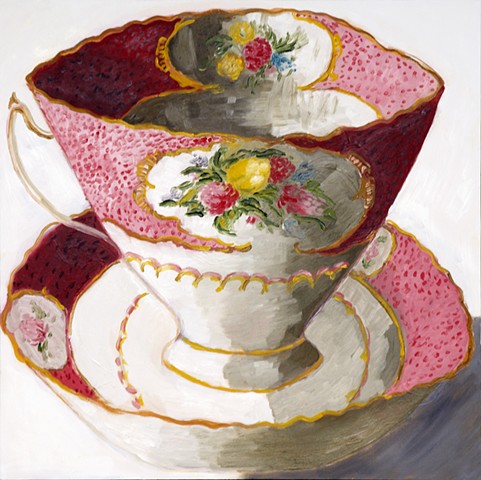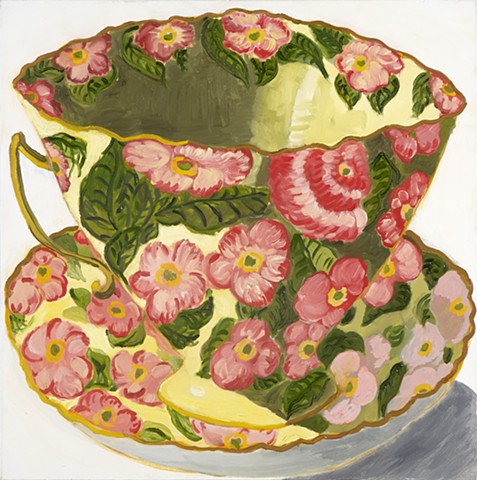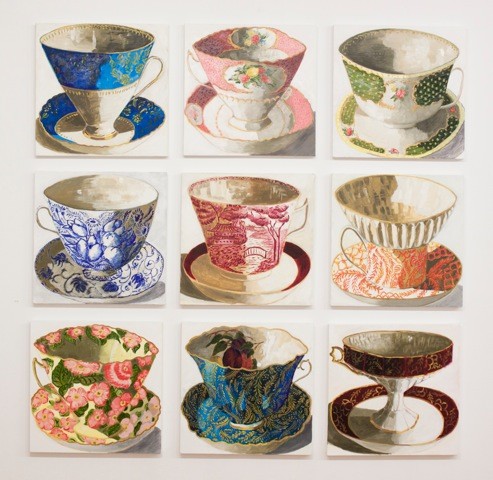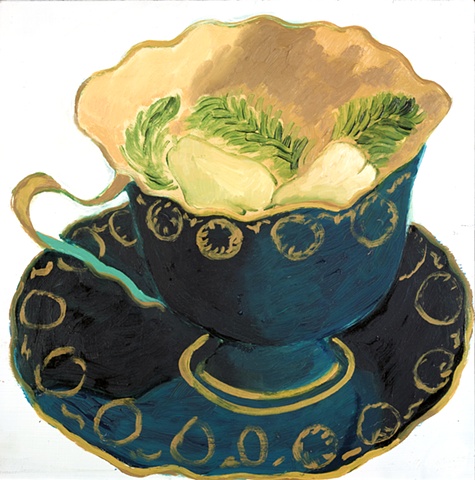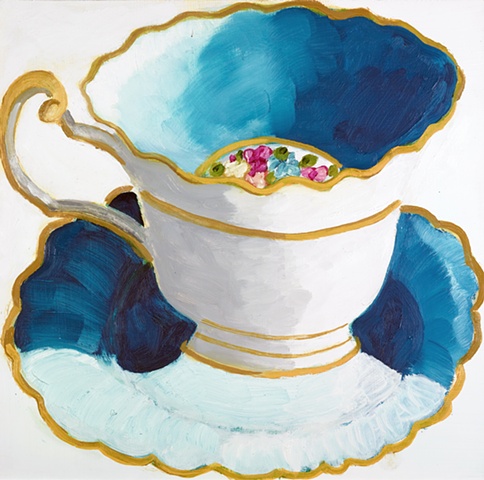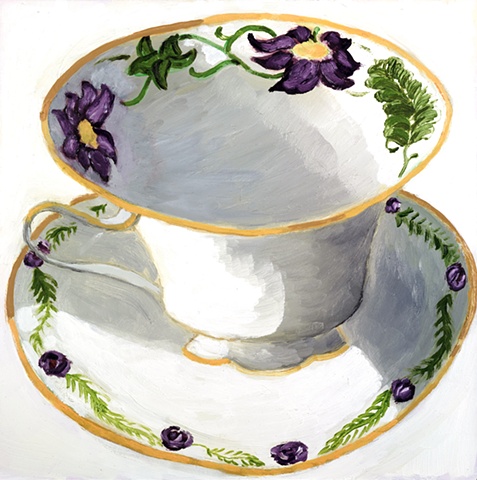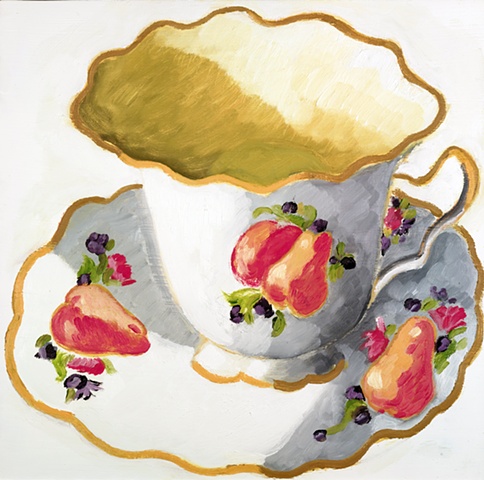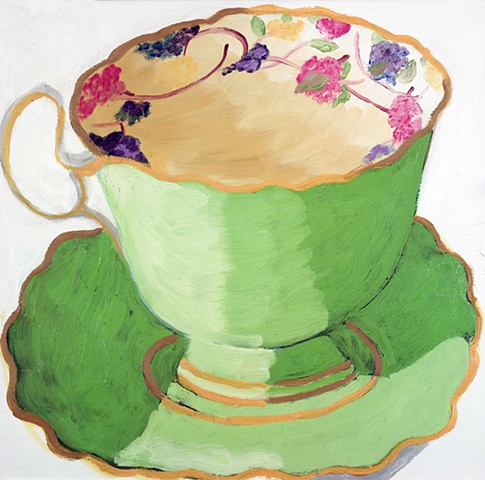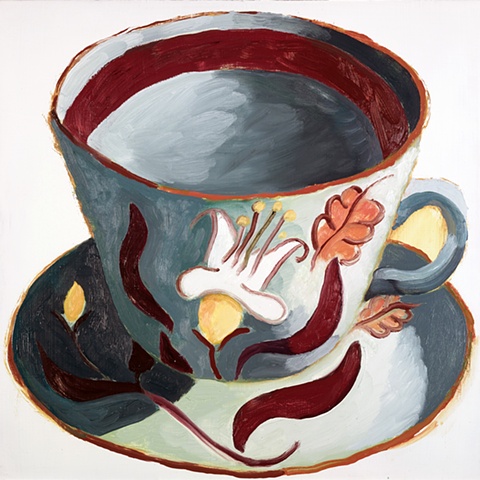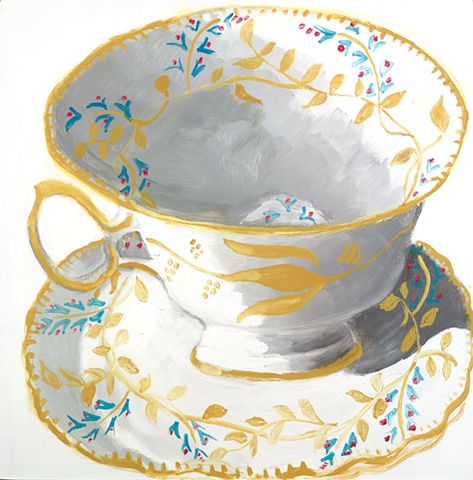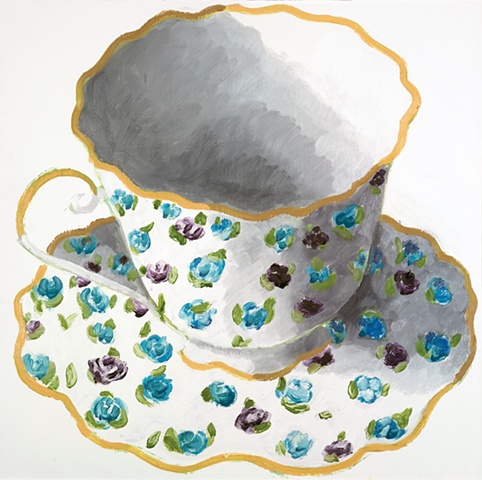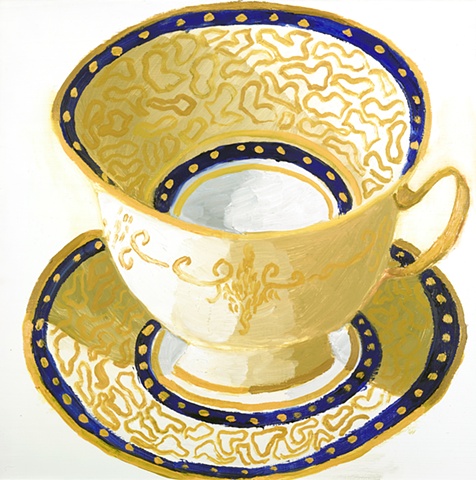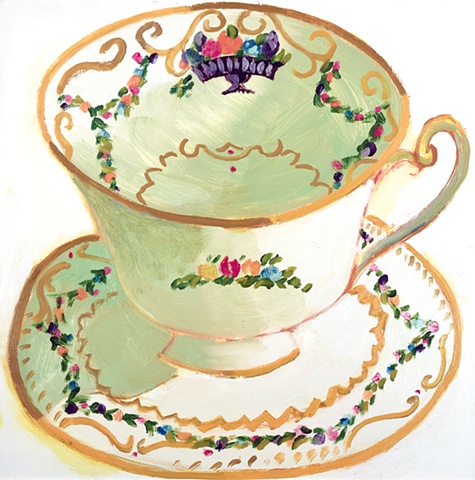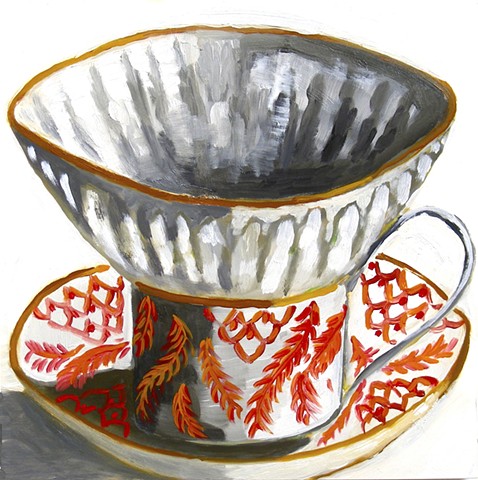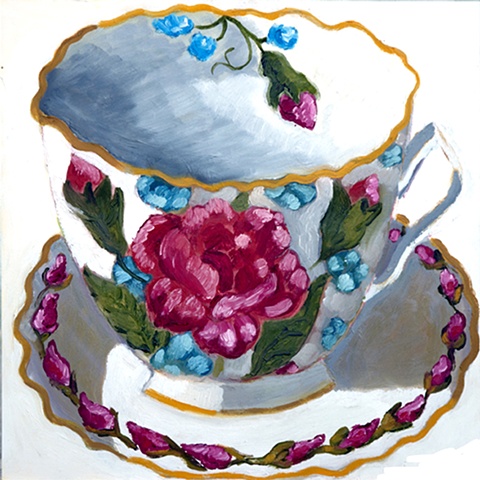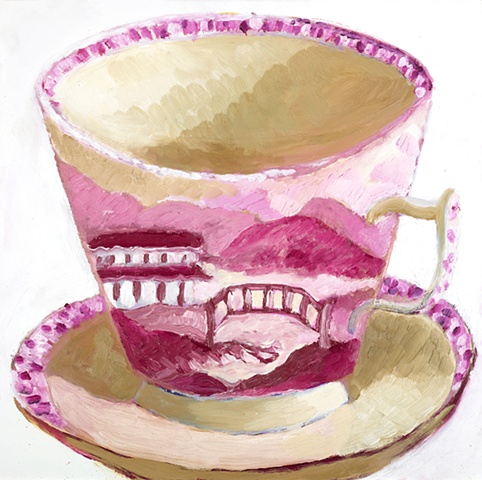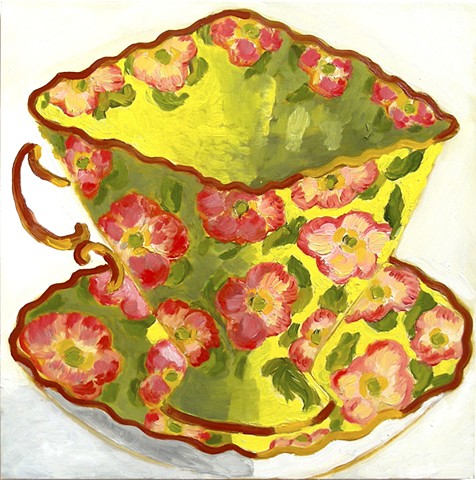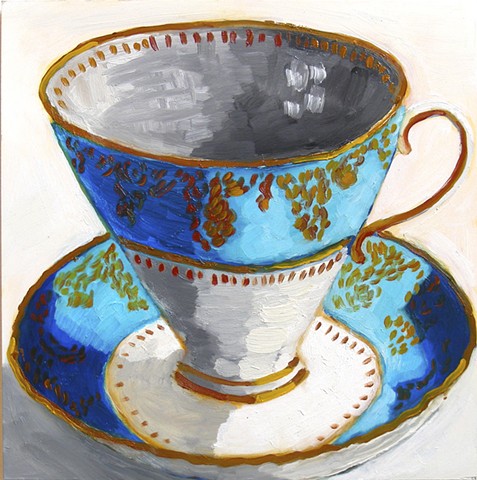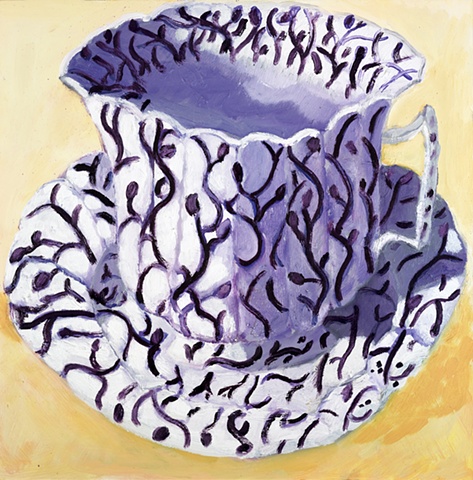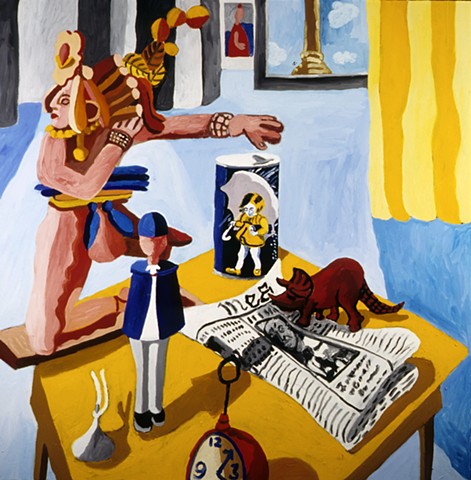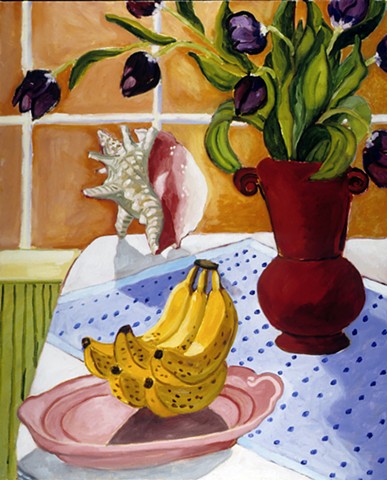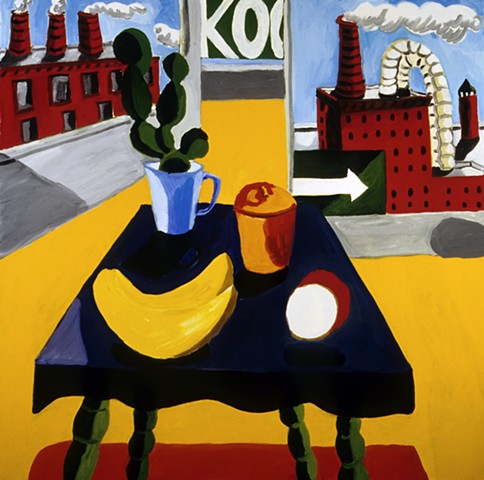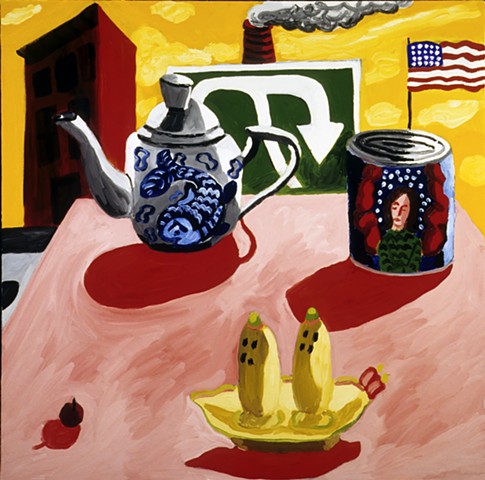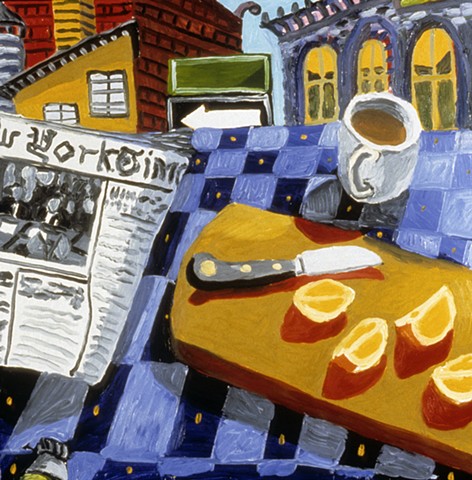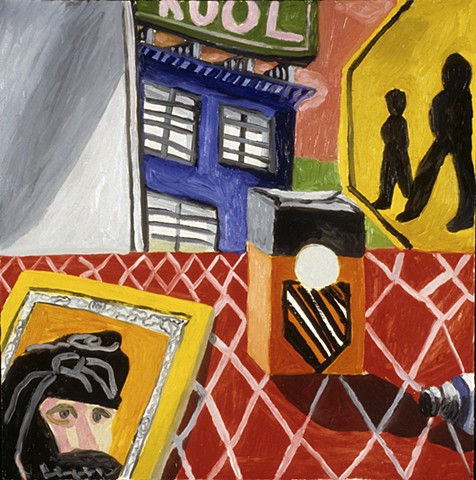Objects
What You See is What a You Get
Elizabeth Johnson
The Easton Irregular
Emily approaches her subjects--teacups, old buildings, matzo cracker boxes, asparagus, the human figure--with equanimity and imbues them with the unique, wobbly energy that emanates from her hand. If you funneled the strange vitality of Charles Burchfield through the clear structure of Edward Hopper, you would get Emily Steinberg’s emotional portraits of everyday subjects.
With the teacups, bold brushstrokes depict the decorative pattern as well as the form, distinguishing the interior and exterior surfaces. Smooth areas of flat color calm the eye and conjure the feeling of cool porcelain against your cheek. When I met Emily in her studio in Philadelphia, I was shocked to see the actual teacups she used: they were like movie stars at the airport--tired, annoyed, tightlipped and grim. How did she discover and express so much drama in china? Each cup has its own personality, and her skill at creating characters suggests a story. The cups remind her of her mom who “liked her cup of tea” and evoke imaginary women dressed plain to fancy.
When describing her painting style Emily remarks, “What you see is what you get,” I would add that she knows when to paint colorful, complicated passages and when to leave well enough alone. She creates a model for the human emotions of attachment and detachment. To return to those teacups: everyday objects are transformed into emotional, sentient beings, and as a group of 16, they represent a cross section of society. Emily is the painter’s version of Honoré de Balzac, author of The Human Comedy. Balzac also measured description, creating comic, tragic characters. A Realist, he saw the world ruin the weak and champion the strong and his sarcastic humor eases the pain of human failure. Juxtaposing gnarly patches of paint with smooth ones, Emily creates independent, talkative, female characters in all their contradictions. Witty and candid, they are more than happy to reveal their frailties, struggles and triumphs.
